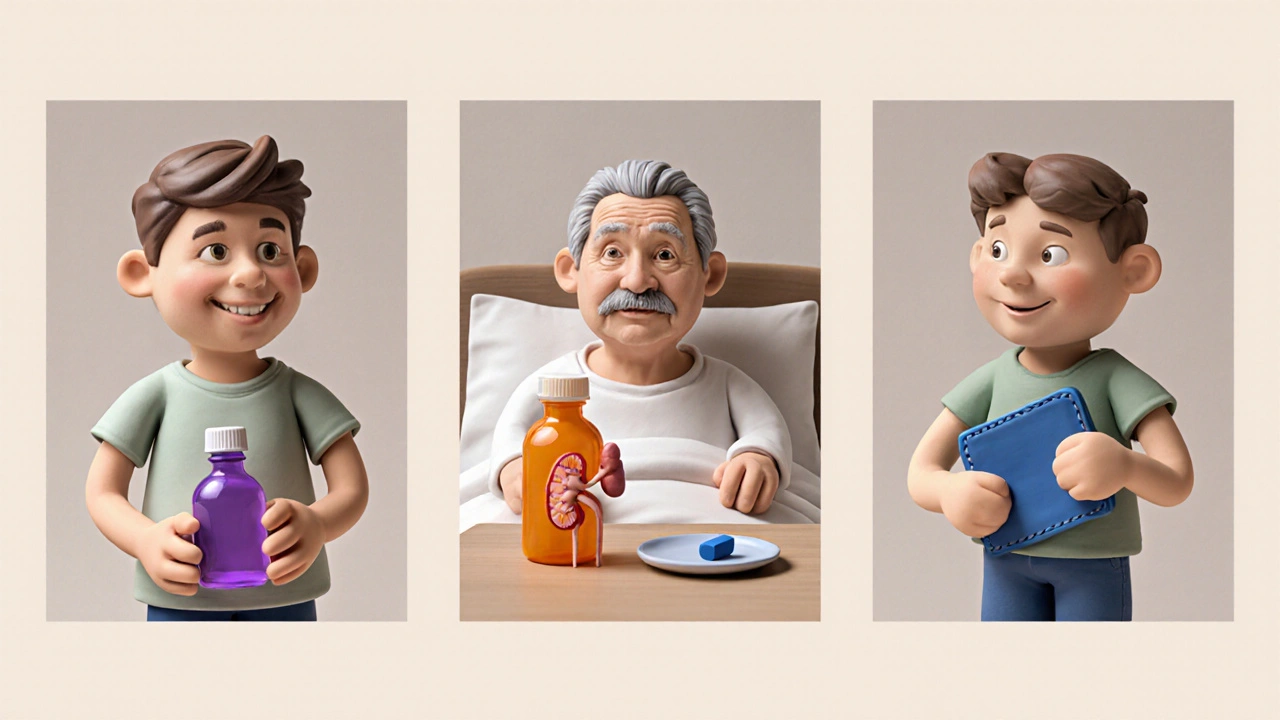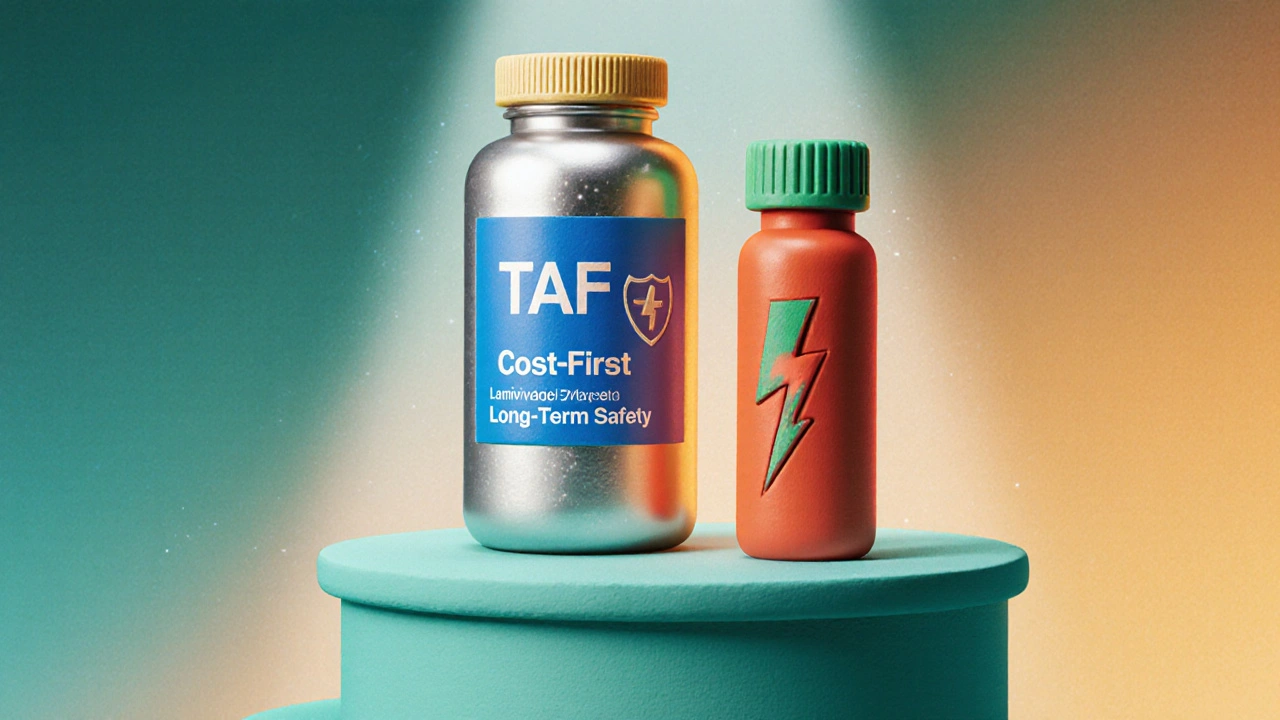When doctors treat chronic hepatitis B, they need a drug that lowers the virus, keeps the liver safe, and stays affordable. Epivir HBV (Lamivudine) is a nucleoside analogue that blocks the virus’s ability to copy its DNA, helping patients achieve lower viral loads and fewer liver complications. But the market now offers several newer options, each with its own pros and cons. This guide walks you through the most common alternatives, compares real‑world performance, and helps you decide which medication fits a given situation.
Why Lamivudine Still Gets Talked About
Lamivudine (brand name Epivir HBV) has been on the scene since the early 2000s. It’s cheap, taken once a day, and has a solid safety record. For patients with limited insurance coverage, it often remains the first prescription. However, the drug’s biggest weakness is a relatively low barrier to resistance - the virus can develop mutations after about 1‑2 years of therapy.
Top Alternatives on the Market (2025)
- Tenofovir disoproxil fumarate (TDF) - sold as Viread, this nucleotide analogue has a high resistance barrier and works well for both HBV and HIV co‑infection.
- Tenofovir alafenamide (TAF) - marketed as Vemlidy, it delivers the same viral suppression as TDF but with lower kidney and bone toxicity.
- Entecavir - brand name Baraclude, a potent nucleoside analogue with a very high resistance barrier for treatment‑naïve patients.
- Adefovir dipivoxil - trade name Hepsera, older than tenofovir but still used when other drugs aren’t tolerated.
- Pegylated interferon‑alpha - a weekly injection that boosts the immune system instead of directly attacking the virus.
Comparison Table: Key Attributes
| Drug | Mechanism | Typical Dose | Resistance Barrier | Kidney/Bone Safety | Average Monthly Cost (US$) |
|---|---|---|---|---|---|
| Epivir HBV (Lamivudine) | Nucleoside analogue | 100 mg once daily | Low - resistance in ~15‑20% after 1‑2 years | Good | ≈ 15 |
| Tenofovir disoproxil fumarate (TDF) | Nucleotide analogue | 300 mg once daily | High - <1% resistance after 5 years | Moderate - can affect kidneys, bone density | ≈ 90 |
| Tenofovir alafenamide (TAF) | Nucleotide analogue (pro‑drug) | 25 mg once daily | High - similar to TDF | Excellent - minimal kidney/bone impact | ≈ 120 |
| Entecavir | Nucleoside analogue | 0.5 mg (naïve) or 1 mg (resistant) daily | Very high - <1% resistance | Good | ≈ 70 |
| Adefovir dipivoxil | Nucleotide analogue | 10 mg once daily | Moderate - resistance ~5% after 4 years | Potential nephrotoxicity at high doses | ≈ 30 |
| Pegylated interferon‑alpha | Immune modulation | 180 µg subcut weekly | Not applicable - works via immune boost | Side effects include flu‑like symptoms, depression | ≈ 400 (short course) |

How to Choose the Right Option
Picking a hepatitis B drug isn’t just about price. Below are the most common decision points doctors and patients weigh:
- Resistance risk. If you expect long‑term therapy, a high barrier (TAF, Entecavir, TDF) is usually safer.
- Kidney or bone health. Patients with chronic kidney disease or osteoporosis benefit from TAF or Entecavir.
- Cost & insurance coverage. Lamivudine remains the cheapest; generic TAF and Entecavir are becoming more accessible.
- Coinfection with HIV. Tenofovir‑based regimens treat both viruses, simplifying pill burden.
- Desire for finite therapy. Pegylated interferon offers a 48‑week course that can lead to functional cure, but side‑effects are significant.
Real‑World Scenarios
Scenario 1 - Young adult with normal kidney function. A 28‑year‑old just diagnosed with chronic HBV, no cirrhosis, wants a one‑pill daily regimen. Entecavir’s high potency and low resistance make it a top pick, even though it costs more than lamivudine.
Scenario 2 - Older patient with mild CKD. A 62‑year‑old on multiple meds has an eGFR of 55 mL/min. Here, TAF shines because it avoids the kidney strain seen with TDF, while still delivering strong viral suppression.
Scenario 3 - Limited insurance coverage. An uninsured individual can only afford generic drugs. Lamivudine becomes the go‑to, but the doctor will schedule regular HBV DNA monitoring to catch resistance early.
Scenario 4 - HBV/HIV coinfection. Tenofovir (either TDF or TAF) is recommended because it hits both viruses, reducing the need for separate HIV meds.
Scenario 5 - Patient wants a chance at functional cure. Pegylated interferon‑alpha is the only therapy that can sometimes clear HBsAg completely, but it requires weekly injections and monitoring for mood changes.
Safety and Side‑Effect Profiles
All antivirals share the goal of keeping the liver healthy, but each has a unique safety fingerprint:
- Lamivudine: Generally well‑tolerated; rare nausea, headache.
- TDF: Can cause declines in creatinine clearance, bone mineral loss over years.
- TAF: Much lower impact on kidneys and bone, but still may cause mild hyperbilirubinemia.
- Entecavir: Mild fatigue or dizziness in <5% of patients; rarely causes lactic acidosis.
- Adefovir: Notable nephrotoxicity at higher doses; monitor serum creatinine.
- Pegylated interferon: Flu‑like symptoms, depression, thyroid dysfunction - requires close psychiatric follow‑up.

Monitoring and Follow‑Up
Regardless of the drug chosen, clinicians follow a similar monitoring schedule:
- Baseline labs: HBV DNA level, HBsAg, ALT, kidney function, bone density (if TDF/TAF risk).
- Quarter‑yearly check: HBV DNA to gauge suppression, ALT for liver inflammation.
- Yearly assessment for resistance (especially with lamivudine) using genotype testing.
- Adverse‑event review at each visit - focus on renal markers for tenofovir, mood for interferon.
Early detection of rising viral load lets doctors switch to a higher‑barrier drug before liver damage accrues.
Bottom Line: Which Drug Wins?
If you need a quick answer, think of three buckets:
- Cost‑first: Epivir HBV (Lamivudine) - cheap, safe, but watch for resistance.
- Long‑term safety: Tenofovir alafenamide (TAF) - best for kidneys and bones, higher price.
- Maximum potency with low resistance: Entecavir - strong viral control, moderate cost.
Talk with your healthcare provider about your liver health, kidney function, insurance, and personal goals. The right choice balances effectiveness, safety, and what you can actually afford.
Quick Reference Checklist
- Assess baseline renal function before starting TDF or high‑dose Adefovir.
- Choose Entecavir or TAF for patients needing a high resistance barrier.
- Consider lamivudine only if cost is the overriding factor and you can commit to frequent viral load checks.
- Use pegylated interferon only for motivated patients who accept injection and monitoring.
- Re‑evaluate therapy every 6‑12 months; switch if HBV DNA rises.
Can I switch from lamivudine to another drug if resistance develops?
Yes. Once a resistance mutation is detected, doctors often move patients to a higher‑barrier drug like tenofovir (TAF or TDF) or entecavir. The switch is usually smooth because the newer drugs have different resistance pathways.
Is tenofovir alafenamide safe for people with mild kidney disease?
TAF is designed to deliver the active drug inside cells, resulting in far lower plasma concentrations. Studies up to 2024 show minimal impact on creatinine clearance, making it a preferred option for CKD stage 2-3.
How often should I have my HBV DNA level checked on lamivudine?
Guidelines recommend every 3-6 months during the first two years, then every 6-12 months if the viral load stays suppressed. Any upward trend should trigger prompt resistance testing.
Why might a doctor prescribe pegylated interferon instead of a pill?
Interferon can lead to seroclearance of HBsAg in a minority of patients, offering a chance at functional cure after a finite 48‑week course. It’s chosen when patients are willing to handle side‑effects for that potential benefit.
Are there any food restrictions with these HBV drugs?
Most oral antivirals (lamivudine, tenofovir, entecavir, adefovir) can be taken with or without food. Interferon injections have no dietary limits, but you should avoid alcohol to protect the liver.


Kelli Benedik
October 22, 2025 AT 15:19Wow, reading about lamivudine feels like stepping into a retro‑viral movie 🎬✨! The cheap price tag makes it a hero for folks on a shoestring budget, but the sneaky resistance whisper after a year or two is the plot twist we all dread. 😱 Its once‑daily pill vibe is smooth, like a jazz solo that never misses a beat. Still, when newer antivirals drop the mic with higher barriers, lamivudine becomes the underrated sidekick we keep rooting for. 🌟
Holly Green
November 3, 2025 AT 05:05Lamivudine’s affordability is commendable, yet the resistance risk cannot be ignored.
Caleb Clark
November 14, 2025 AT 18:52Let me break it down for anyone still trying to navigate the sea of HBV meds. First off, lamivudine was the gold standard back in the early 2000s, and many patients still swear by it because it’s easy on the wallet and the schedule. However, the virus is a crafty opponent and after roughly 1‑2 years it can develop mutations that render the drug far less effective, a fact that’s been documented in numerous cohort studies. This low resistance barrier means doctors often have to switch patients to a more potent agent once those mutations surface, which can be a hassle both medically and financially. On the flip side, the safety profile of lamivudine is solid; liver enzymes stay stable in most cases and renal toxicity is practically non‑existent. For people who are co‑infected with HIV, lamivudine also hits the virus, but the newer tenofovir formulations do a better job without the same resistance concerns. Cost remains the biggest driver – at about $15 a month it’s a bargain compared to tenofovir alafenamide, which can cost upwards of $300. Yet, one must weigh the hidden cost of potential treatment failure and subsequent resistance development, which could lead to even more expensive therapies down the line. Real‑world data from community clinics shows that patients who started on lamivudine and stayed on it for over a year without switching had a 20 % chance of resistance, whereas those on entecavir or TAF had less than 5 % over the same period. Moreover, adherence-while generally good with a once‑daily tablet-can still be compromised if patients experience breakthrough viremia and lose confidence in the treatment. The liver safety is a plus; unlike TDF, lamivudine doesn’t raise alarms about bone mineral loss or kidney strain, making it attractive for older patients or those with comorbidities. But the trade‑off is that you’re essentially gambling on the virus staying naïve, which, biologically speaking, is a risky bet. If you’re in a healthcare system where insurance covers the newer drugs, the argument for lamivudine weakens considerably. Conversely, in settings with limited formulary options, lamivudine remains a practical first‑line therapy, provided that vigilant viral load monitoring is in place. Bottom line: it’s cheap, it works, but it’s also a ticking time‑bomb for resistance, so close follow‑up is non‑negotiable.
Eileen Peck
November 26, 2025 AT 08:39Great rundown! I’d add that lamivudine’s renal safety is a real plus for patients with kidney concerns, but the mutation risk means regular viral load checks are a must. In my clinic we often start with lamivudine for cost reasons and then switch if we see any uptick in HBV DNA. The balance between cost and resistance is a tricky dance, so keep an eye on the labs.
Steven Young
December 7, 2025 AT 22:25Lamivudine looks cheap but the virus is always watching the drug and mutates the moment you get comfortable it’s a snake oil disguised as therapy and you never know who’s really pulling the strings behind the pharma curtain